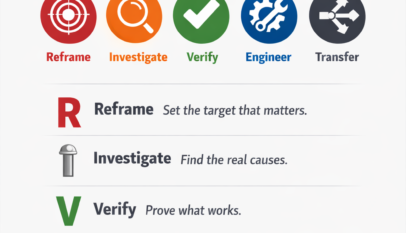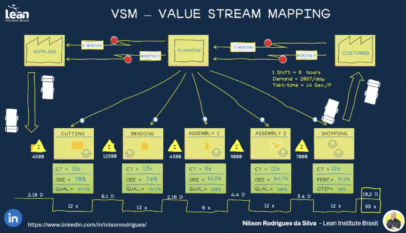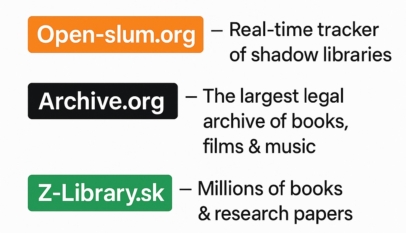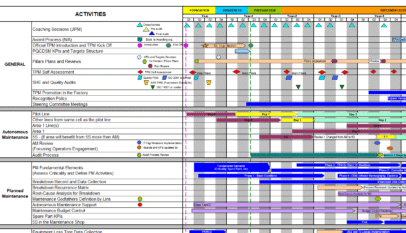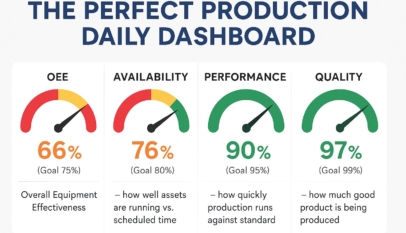Introduction to Right First Time (RFT)
Right First Time (RFT) is a critical manufacturing metric that emphasizes producing goods that meet quality standards on the first attempt without requiring rework. This principle is fundamental in Lean and Six Sigma methodologies, aiming to enhance efficiency, reduce waste, and ensure customer satisfaction. Organizations can significantly improve their operational performance and cost-effectiveness by achieving high RFT scores.
Key Principles of Right First Time
RFT revolves around several core principles:
- Quality Control: Implementing stringent quality control measures to ensure products are manufactured to the required specifications from the outset.
- Process Optimization: Continuously analyzing and improving manufacturing processes to minimize variations and defects.
- Employee Training: Providing comprehensive training programs to ensure that employees have the skills and knowledge necessary to produce high-quality products.
- Preventive Maintenance: Maintaining equipment and tools in optimal condition to prevent breakdowns and defects.
- Root Cause Analysis: Identifying and addressing the root causes of defects to prevent recurrence.
Tools and Techniques for Achieving High RFT
Several tools and techniques can help organizations achieve high RFT scores:
- Six Sigma: This methodology uses data-driven techniques to eliminate defects and improve processes. Tools like DMAIC (Define, Measure, Analyze, Improve, Control) and statistical analysis are integral to Six Sigma.
- Kaizen: A philosophy of continuous improvement that involves all employees in identifying and implementing small, incremental changes to improve processes.
- Total Quality Management (TQM): An organization-wide approach to embedding quality in all aspects of operations, focusing on customer satisfaction, continuous improvement, and employee involvement.
- Statistical Process Control (SPC): Using statistical methods to monitor and control processes, ensuring they remain within predefined quality limits.
- Failure Mode and Effects Analysis (FMEA): A systematic approach to identifying potential failure modes in a process and their effects, prioritizing them based on severity, occurrence, and detection, and implementing corrective actions.
Implementing RFT in Manufacturing
To successfully implement RFT, organizations should follow these steps:
- Define Quality Standards: Clearly define the quality standards and specifications that products must meet.
- Train Employees: Provide training on quality standards, processes, and tools to ensure all employees are equipped to achieve RFT.
- Implement Quality Control Measures: Use tools like SPC and FMEA to monitor and control processes, ensuring they remain within quality limits.
- Conduct Root Cause Analysis: When defects occur, conduct root cause analysis to identify and address the underlying causes.
- Continuously Improve Processes: Use methodologies like Six Sigma and Kaizen to continuously analyze and improve processes, minimizing variations and defects.
Benefits of Right First Time
Achieving high RFT scores offers several benefits:
- Reduced Costs: Minimizing defects and rework reduces material, labor, and overhead costs.
- Improved Efficiency: Streamlined processes lead to faster production times and higher throughput.
- Enhanced Customer Satisfaction: Delivering high-quality products consistently increases customer satisfaction and loyalty.
- Higher Profit Margins: Reduced costs and improved efficiency lead to higher profit margins.
- Competitive Advantage: Consistently producing high-quality products gives organizations a competitive edge in the market.
Case Study: Implementing RFT at Udemy
Udemy, a leading online learning platform, implemented RFT principles to enhance its course production process. By focusing on quality control, process optimization, and employee training, Udemy achieved significant improvements in course quality and production efficiency. Key initiatives included:
- Quality Standards: Defining clear quality standards for course content, including video production, instructional design, and user engagement.
- Employee Training: Providing comprehensive training programs for course creators on quality standards, production techniques, and instructional design.
- Process Optimization: Streamlining the course production process to minimize variations and defects, ensuring consistent quality across all courses.
- Root Cause Analysis: Conducting root cause analysis on issues like low student engagement and course completion rates, implementing corrective actions to address these issues.
- Continuous Improvement: Using Kaizen principles to continuously improve the course production process, incorporating feedback from students and instructors.
Right First Time is a powerful principle that can transform manufacturing and production processes. By focusing on quality control, process optimization, and continuous improvement, organizations can achieve high RFT scores, leading to reduced costs, improved efficiency, and enhanced customer satisfaction. Implementing RFT requires a commitment to quality at all levels of the organization, but the benefits are well worth the effort.

